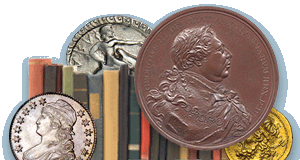
PREV ARTICLE
NEXT ARTICLE
FULL ISSUE
PREV FULL ISSUE
HOBO NICKEL FLAPPER CARVINGSThe Spring 20205 issue of Bo Tales from the Original Hobo Nickel Society has a nice article by Barry Homrighaus on "Flapper Carvings" - nickels sculpted to depict the fashionable young women "flappers" of the early 20th century. With permission we're publishing an excerpt below. Thank you! See the complete issue for more. -Editor Most classic hobo nickels depict bearded gents in derby hats. Classic carvers also portrayed and often satirized lots of other male characters; Irishmen, Chinamen, Rabbis, Shriners, Uncle Sam, Honest Abe, etc. But ladies on hobo nickels are exceedingly rare. Only thirty-eight images of women can be found among the more than 2,800 classic carvings (i.e. carvings on Buffalo nickels made before 1982) in the OHNS archives. Three of these thirty-eight are women with artfully-styled long hair, carved by "Bert" Wiegand. Twenty-six more are attributed to "Bo" Hughes, mostly images of his lover "Monique." Of the remaining nine portraits of women in the archives, eight are Flappers, and it was these eight which initially caught my interest. Subsequent research located four more Flappers in private collections which having never been the subject of a QD examination cannot be found in the archives. The birth of the "flappers" in America can be traced to the early years of the 20th century, when popular media began to showcase women with boyish figures, slinky dresses, and short, "girlish" hair. But the flapper image was not just a style, it was a statement. Flappers challenged the social norms of their day with scandalous clothing, quirky hairstyles, and shocking behavior. They chain-smoked cigarettes and drank gin, and were "all the rage" in Hollywood. The most iconic feature of the flapper's style was short or "bobbed" hair. It could be a straight, blunt cut known as a "Dutch bob," or curled up around the cheek as in the "coconut bob," or styled with "finger waves" or "spit curls." While only a few of the flappers are remembered by name today - Clara Bow and Josephine Baker come to mind - as a generation of young women redefining their role in society, they have not been forgotten. Only the best hobo nickel carvers made extensive modifications to the profile. It was easier for a less skilled artist to simply add a beard and mustache and otherwise leave the facial features alone. The complete transformation of the face of Flapper #1 showcases the work of a master carver. Flapper #4 must have looked familiar to Del Romines, even if he had never seen that particular coin before, because it was an almost perfect match to Flapper #5, the coin with the inscription "JK 1921" which had graced the cover of his first book, Hobo Nickels, in 1982. Romines graded Flapper #4 Superior, and his familiarity with Flapper #5 was evident when he described #4 as, "Possibly part of a series which was originally thought to have been carved by a female. A ‘JK 1921' and ‘JT 1919' coins are pictured on page 35 in the hobo nickel book, and are very similar…to this carving." [my emphasis]. With these comments, the original thought that a woman had carved the Flappers was dismissed. Instead, Romines asserted that Flapper #4, and by implication its twin #5, were "possibly… by Bo." After October 1995, through decades of subsequent QD reports and articles written by hobo nickel experts, the theory of a female hobo nickel carver never appeared again.
For more information on the Original Hobo Nickel Society, see:
Wayne Homren, Editor The Numismatic Bibliomania Society is a non-profit organization promoting numismatic literature. See our web site at coinbooks.org. To submit items for publication in The E-Sylum, write to the Editor at this address: whomren@gmail.com To subscribe go to: Subscribe All Rights Reserved. NBS Home Page Contact the NBS webmaster 
|


